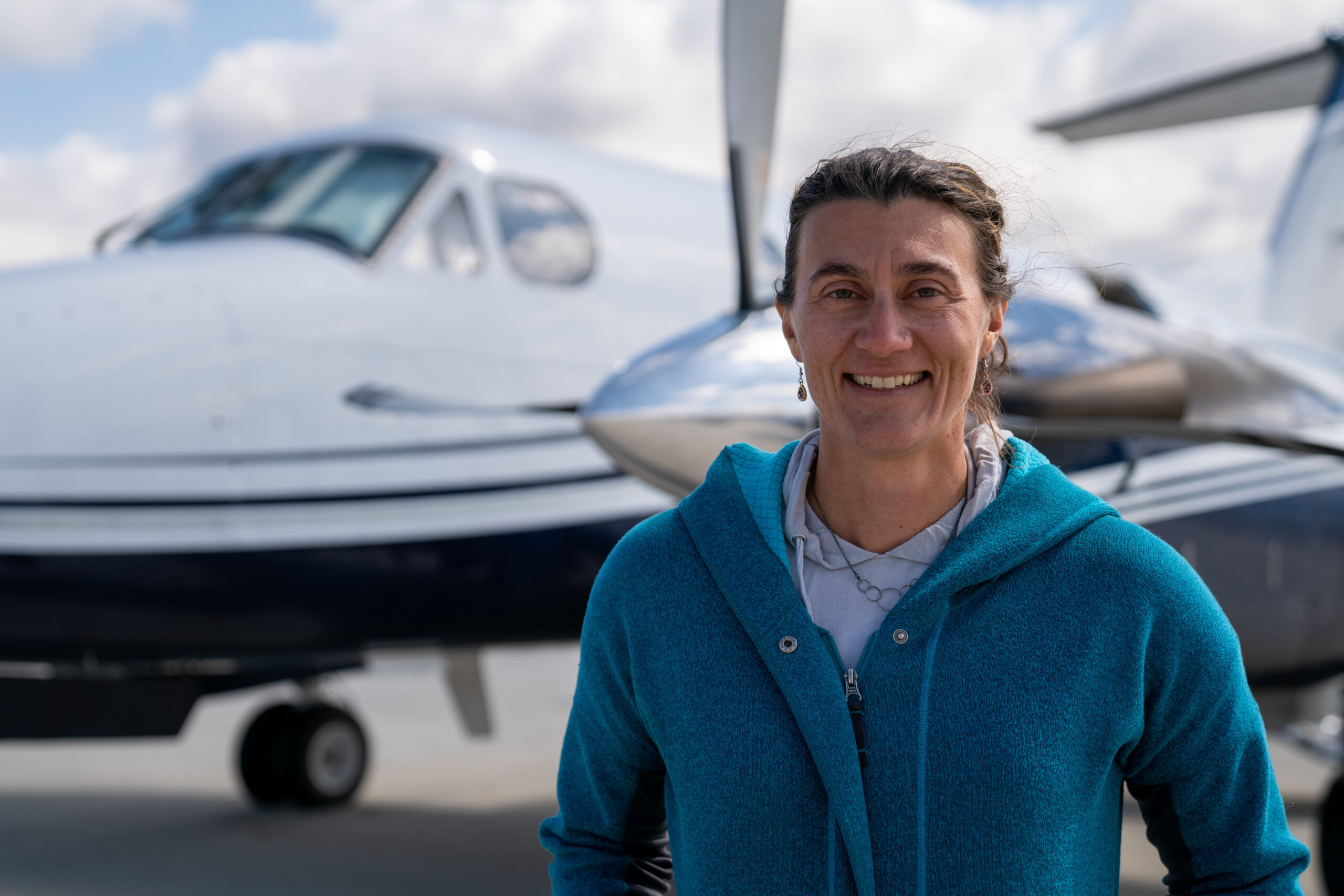152nd Airlift Wing Public Affairs
Story by Senior Airman Michelle Brooks
I had the opportunity to interview Lisa Allen, a lead plane pilot with the Bureau of Land Management’s National Aviation Office, about the role of a lead plane pilot during wildland fire suppression missions.
Q. What is the role of a lead plane pilot?
A: The role of a lead plane pilot is to increase the safety margin for the air tankers and helicopters fighting the fires. We do that through flying a more nimble aircraft and being on-scene throughout the mission, so that we can observe the conditions as they change. We find the firelines, we search out all the hazards, we scout the exit routes and we coordinate the air space. Safety is our main goal. Our secondary goal is efficiency and effectiveness. We help the tankers get on to the line and coordinate the resources so we’re using them efficiently and effectively.
Q. How long have you been a lead plane pilot?
A: I was signed off in 2019. I started officially training as a lead plane pilot in 2018. This will be my fourth season.
Q. As far as the training aspect, are you giving feedback to the air tankers on their drops?
A: Yes. I try to always make a left-hand turn so that I can see the drop point easier. Once I come off the run I watch the retardant fall. We evaluate the start point, if we’re trying to tie into something, or the end point, if we’re trying to roll up to something. Also, we evaluate the direction of the line—how much it drifted one way or the other if we had a crosswind—the angles of the line. We try to give them honest feedback. The pilots are using all their knowledge, their previous experience, and all that culminates to them pushing the button. They’re always judging and trying to figure out, “Did I push that button in the right place?” or, “Did I put my airplane in the right place?” If we sugar coat the drop, we’re not helping. We’ll say things like, “that was a half a load late,” or, “a wingspan to the left,” or, “you were off on the heading by ten degrees.” Things like that.
Q. What risks are involved in this type of low-level flying with an air tanker?
A: One of the principles we learn is to always have an exit and never take a loaded aircraft where you can’t get it out of. Sometimes we can’t drop retardant because there’s just not a good exit—it isn’t safe. The exit is probably the most important part of the drop and the easiest to forget about. A big part of my job is scouting the exit. I also have to be constantly looking for wires, towers, and where there is lower terrain. If, for some reason, either I lose an engine or if the tankers lose an engine and they can’t get rid of a load, where are the hazards they’ll need to avoid?
Q. What is the role of the lead plane when helicopters are being used?
A: We sequence the helicopters in between the tanker drops. So, we find out where they’re going to be dropping and where they’re getting their water from – or, if it’s a recon helicopter, for logistics, we find out where they’re coming from and where they’re going to. Then, we create checkpoints and routes to clear the flight paths of different aircraft away from one another.
Q. What is the most unique aspect of your job?
A: To me, it’s super unique, in that one second you’re sitting here in Boise, like today, and dispatch could call and say, “Hey, we’re sending over a resource order.” We print out a piece of paper and it’s got the name of the fire, its coordinates, and frequencies—and we get in the plane and go. It could be from here to SoCal. It could be all the way to Florida. I go all over the place. I also get to fly a King Air, which was not designed to fly in the environment we fly in, it was made as a commuter jet, so that’s interesting. I get to go work with DC-10s, MD-87s, air tractors, C-130s, all kinds of different helicopters, in a very tight airspace—it’s all in a different changing environment–and I get to use my airplane to help.
Lisa Allen, a lead plane pilot with the Bureau of Land Management’s National Aviation Office, provided training and support for U.S. Air National Guard and Reserve MAFFS-equipped C-130 Hercules H- and J-models during annual spring training and certification held at Gowen Field, Idaho April 25-30, 2022. Military flight crews spent the week training with their civilian counterparts in preparation for the upcoming wildland firefighting season. All MAFFS units are requested through the commander of U.S. Northern Command (USNORTHCOM) to provide support to the National Interagency Fire Center (NIFC) in conducting wildland fire fighting operations within the United States. First Air Force (Air Forces Northern), USNORTHCOM’s Air Component Command, is the DoD’s operational lead for the aerial military efforts.
